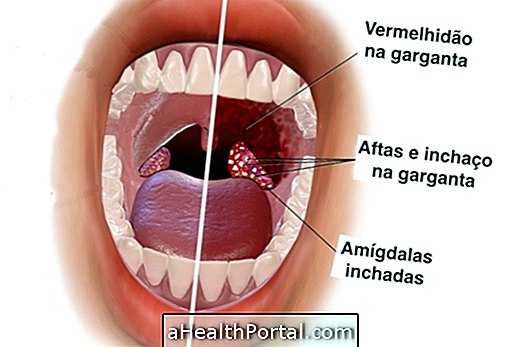An angioma is a benign tumor caused by an abnormal accumulation of blood vessels in the skin, more frequent on the face and neck, or organs such as the liver and brain, for example.
Although the cause of the onset of angioma is still unknown, angioma usually heals when the treatment, which can be done with laser, use of corticosteroids or surgery, for example, is performed. To know how to treat angioma, see: Treatment for angioma.
However, in cases of angioma in the brain or spinal cord, for example, if angioma can not be removed through surgery, it can cause compression of these structures and consequently lead to sequelae such as vision, balance or numbness in the arms or legs and in more serious cases, even death.
Angioma in the skin may appear as a reddish or purple sign or as a ridge, usually red, and is very common in the baby.
Pictures of angioma on the skin




Types of angioma
Some types of angioma can be:
Angioma on the skin
- Flat Angioma: also known as Port wine stain, because this type of angioma is characterized by a smooth, pink or red spot, most common on the face. It is usually already present at birth, and may also appear months later and tends to disappear after the first year of life;
- Strawberry or Tuberous Angioma: angioma characterized by a prominence, usually red, formed by the accumulation of blood vessels, more frequent in the head, neck or trunk. Usually present at birth, but may appear later, growing during the first year of life and slowly regressing until disappearing;
- Angioma Estelar: angioma characterized by a central, rounded, red dot that radiates capillaries in several directions, resembling a spider, and is therefore called a vascular spider. Its appearance is related to the hormone estrogen.
- Angioma Rubi: Rubi angioma are red marbles on the skin that arise in adult life and can increase in size and quantity with aging. Learn more about rubi angioma.
Cerebral angioma
- Cavernous angioma : angioma in the brain, spinal cord or spine, and rarely in other regions of the body. It is usually congenital but may appear after birth. It can be diagnosed by magnetic resonance imaging and causes symptoms such as seizures, headache and bleeding. Your treatment is done through surgery to remove the angioma;
- Venous angioma: congenital malformation of some veins of the brain that are more dilated than normal. Usually, it is only removed by surgery if it is associated with another brain injury or the individual has symptoms such as seizures, for example.
Angioma can also appear in other organs, such as the liver, for example. In these cases, angioma in the liver is very rare to turn cancer.

























